
Southern Nevada Wilderness Areas

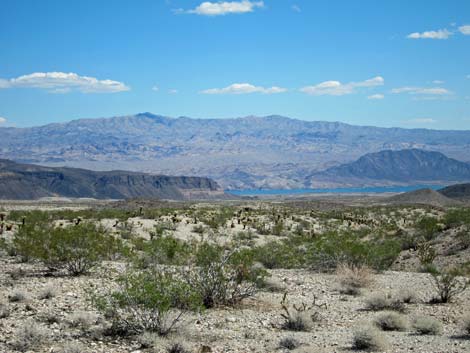 |
Overview Ireteba Peaks is a fairly large (32,745) wilderness area in a region of colorful landscapes, diverse geologic landforms, and grand vistas east across Lake Mohave. The landscape is dominated by the long, narrow Ireteba Peaks ridge, which is the southern end of the El Dorado Mountain Range and runs parallel to Lake Mohave. Elevations on the ridge reach 5,060 feet. The eastern side of the ridge is cut by steep, short canyons that quickly drop onto a broad bajada, which in turn runs at a gentle grade to the shore of Lake Mohave at elevations of about 650 feet. Vegetation is typical Mojave Desert Scrub, dominated by creosote bush, white bursage, mojave yucca, california barrel cactus, and many other low-growing shrubs and grasses. Teddybear cholla are particularly abundant in this area. Link to Wilderness Area Map |
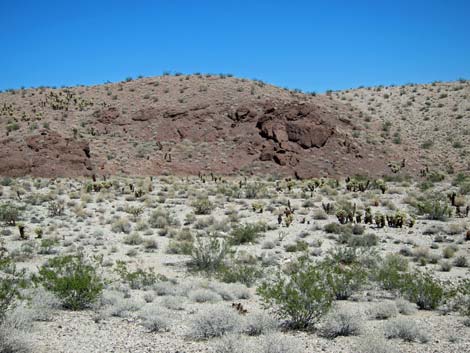 |
If you hike in wilderness areas, help protect them by learning about and reporting noxious and invasive weeds. Location This wilderness area is located about 45 air-miles south of Las Vegas, east of Highway 95 between Nelson and Searchlight. |
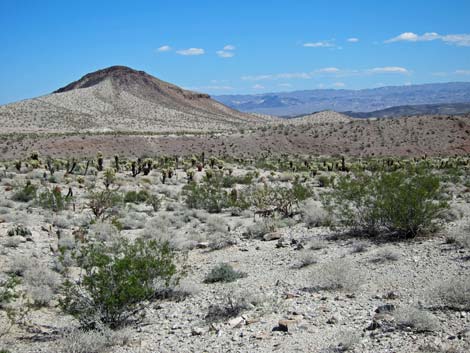 |
Boundaries The northern boundary follows a powerline corridor from the northern end of the Ireteba Peaks ridge eastward to the Lake Mohave, which forms the eastern boundary. The southern boundary follows dirt roads from the river westward, running south of Opal Mountain and north of the Rockefeller Mine. From the mine, the boundary cuts west and around the south end of the Ireteba Peaks ridge. The western boundary is the crest of the Ireteba Peaks ridge. |
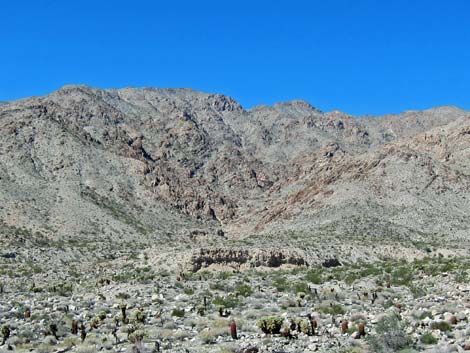 |
Access Access is from dirt roads along the north and south sides of the wilderness area, and by boat from Lake Mohave on the east. There is no easy access from the west. Dirt roads from the north originate on Nelson Road, and dirt roads from the south originate from Cottonwood Cove Road. The road to the southern boundary was graded in September 2012, so it is in reasonable condition and suitable for adventurous drivers in 2WD high clearance vehicle. I drove it in my jeep using 2WD, but it was comforting to know that I could shift into 4WD if necessary. Link to details of access from the south. |
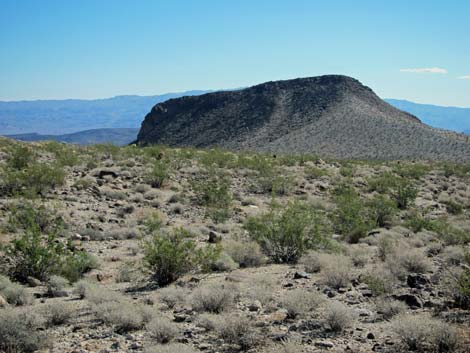 |
Terrain The land is marked by rugged mountains, deep valleys, and broad alluvial fans. This wilderness area includes the southern portion of the El Dorado Mountains, which is the high and narrow Ireteba Peaks Ridge. Ireteba Peak, proper, at the south end of the ridge, is 5,060 feet high. On the western side of the ridge (outside the wilderness area), fairly steep slopes give away to the bajada at an elevation of about 4,100 feet; about 1,000 feet below the summit. However, on the eastern side of the ridge, the steep, rocky slopes drop nearly 2,600 feet to the bajada, reaching it at an elevation of about 2,500 feet. In contrast to the ridge, the bajada to the east is formed of relatively gently rolling hills and washes that extend to Lake Mohave. The edge of the lake is graced by Opal Mountain, a hill capped with basalt that stands some 1,000 feet above the river. |
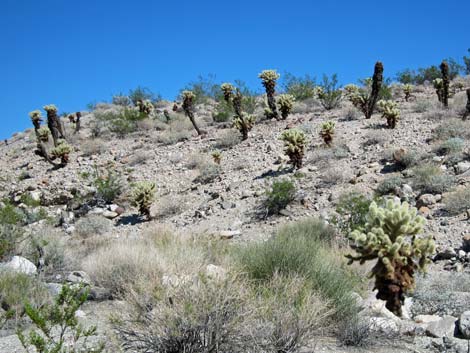 |
Habitat Type The overall habitat type is Mojave Desert Scrub, dominated by creosote bush, white bursage, Mojave yucca, and a few other low-growing shrubs and grasses. In the mountains, barrel cactus and Nevada jointfir are common on the steep, rocky hillsides. In the washes, the vegetation is more diverse. Catclaw acacia and mistletoe are common, plus there are numerous other shrubs, buckhorn cholla, and prickly-pear cactus. Big barrel cactus even occur in some washes, and patches of teddybear cholla blanket some hillsides. |
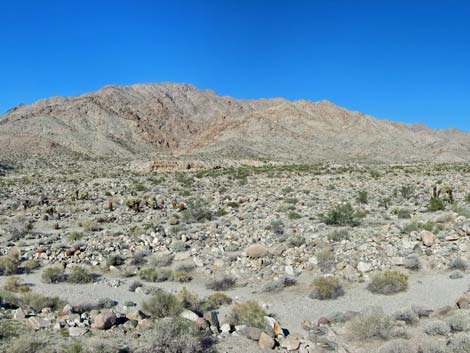 |
Wildlife Mammals include desert bighorn sheep, wild burros, coyotes, black-tailed jackrabbits, and the full complement of small rodents. Reptiles include side-blotched lizards, rattlesnakes, and desert tortoises. Birds include Red-tailed Hawk, Black-throated Sparrow, White-crowned Sparrow, Rock Wren, and Loggerhead Shrike. |
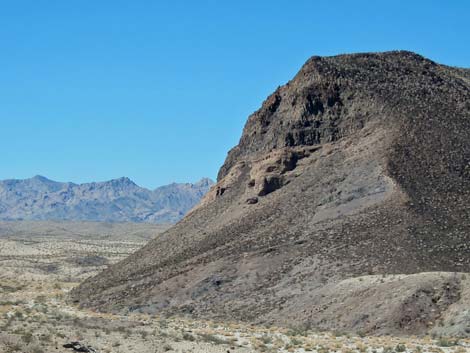 |
Archaeology There are said to be petroglyphs and pictographs in this wilderness area, but I have no personal knowledge of them. Geology The Ireteba Peaks ridge is volcanic, and the south and east sides are largely composed of a pale, granitic-looking rock. The mountains just south of the wilderness area boundary are volcanic, some with colorful banding and all with steep, rocky outcrops. Opal Mountain appears as a mesa capped with basalt, implying that the surrounding land eroded away leaving just this mountain. |
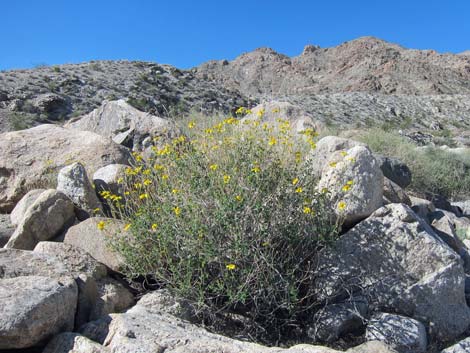 |
Notes Ireteba Peak, the highest point on the El Dorado Mountains at 5,060 feet, was named for Ireteba, a Mojave Indian guide on the Whipple expedition that mapped this area in the 1850s. There are several open, but apparently abandoned, adits (horizontal mine shafts) near the intersection of Rockefeller Mine Road and Opal Mountain Road (NPS roads #32 and #33), plus there are several mine near the end of Rockefeller Mine Road. Open mines are always interesting, but remember, stay out and stay alive. The area is too remote to risk getting hurt and needing an underground rescue. |
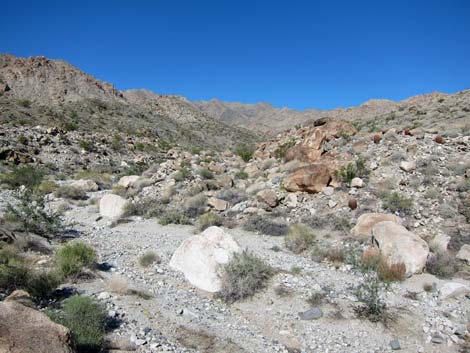 |
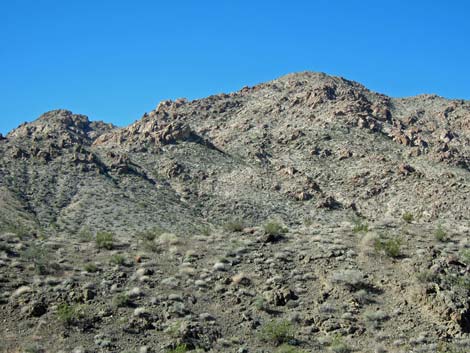 |
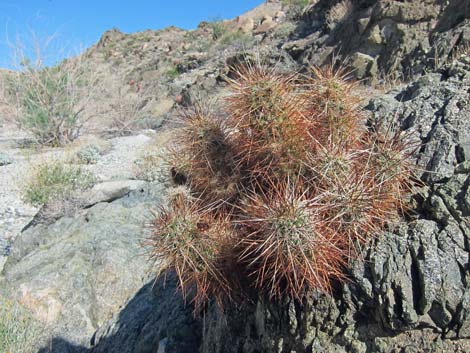 |
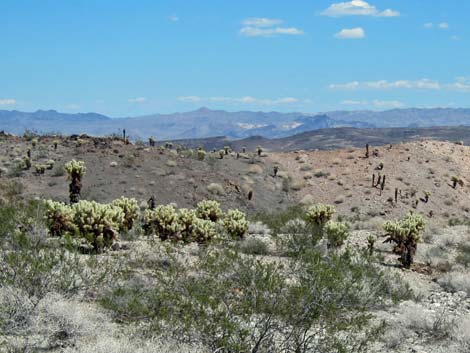 |
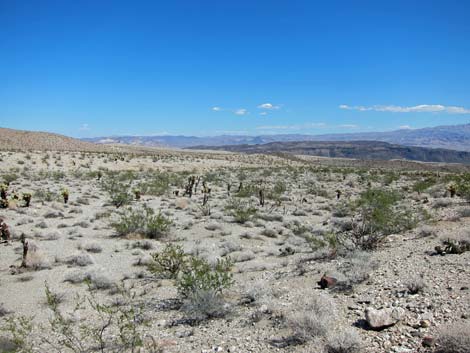 |
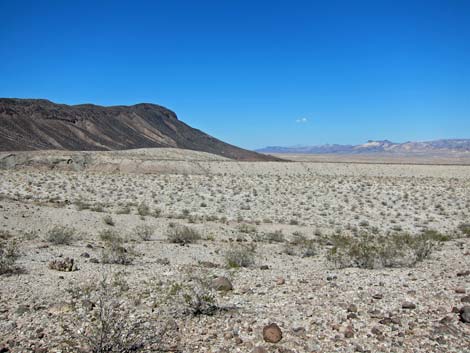 |
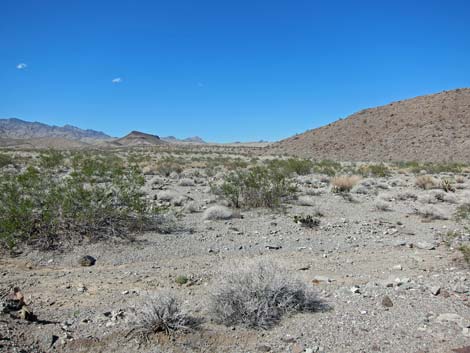 |
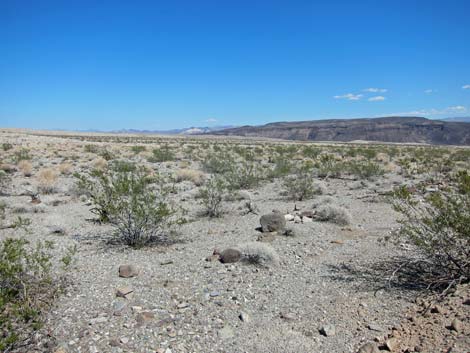 |
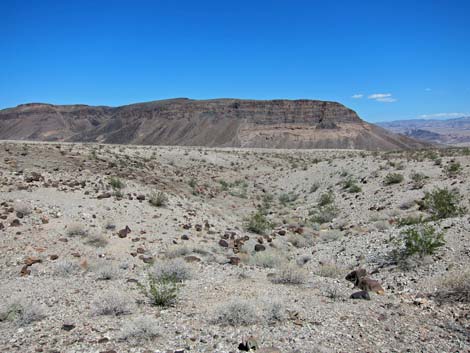 |
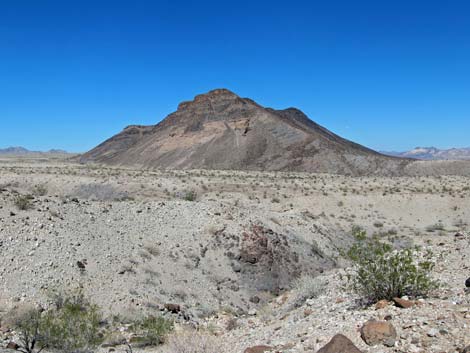 |
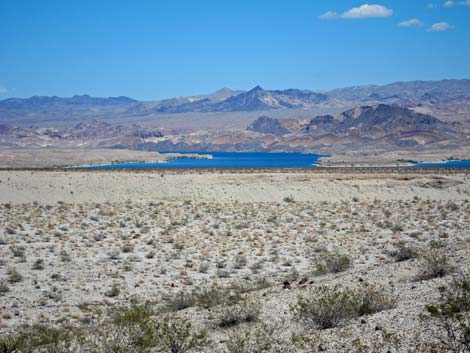 |
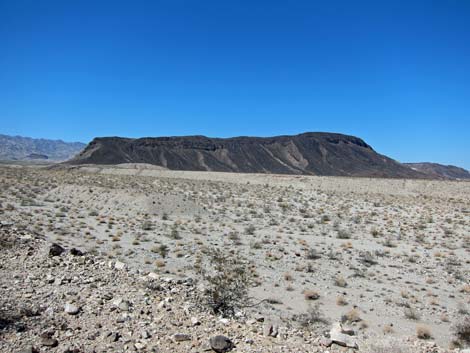 |
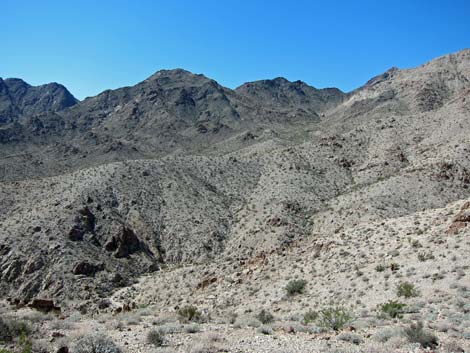 Southwest corner of the wilderness area (view W) |
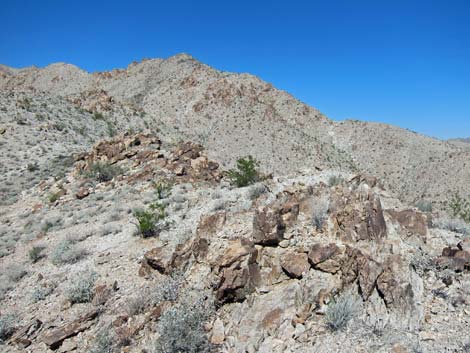 Southwest corner of the wilderness area (view N) |
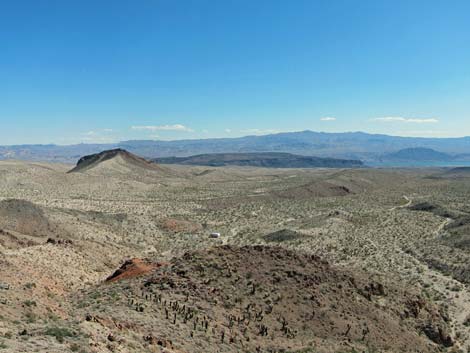 Entire south side of the wilderness area (view E) |
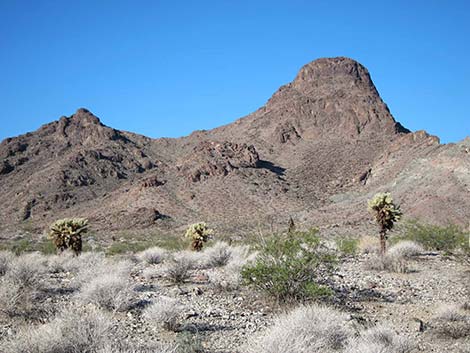 South-central part of the wilderness area (view W) |
Note: All distances, elevations, and other facts are approximate.
![]() ; Last updated 250311
; Last updated 250311
| Wilderness Areas | Hiking | Guide Services | Glossary | Copyright, Conditions, Disclaimer | Home |